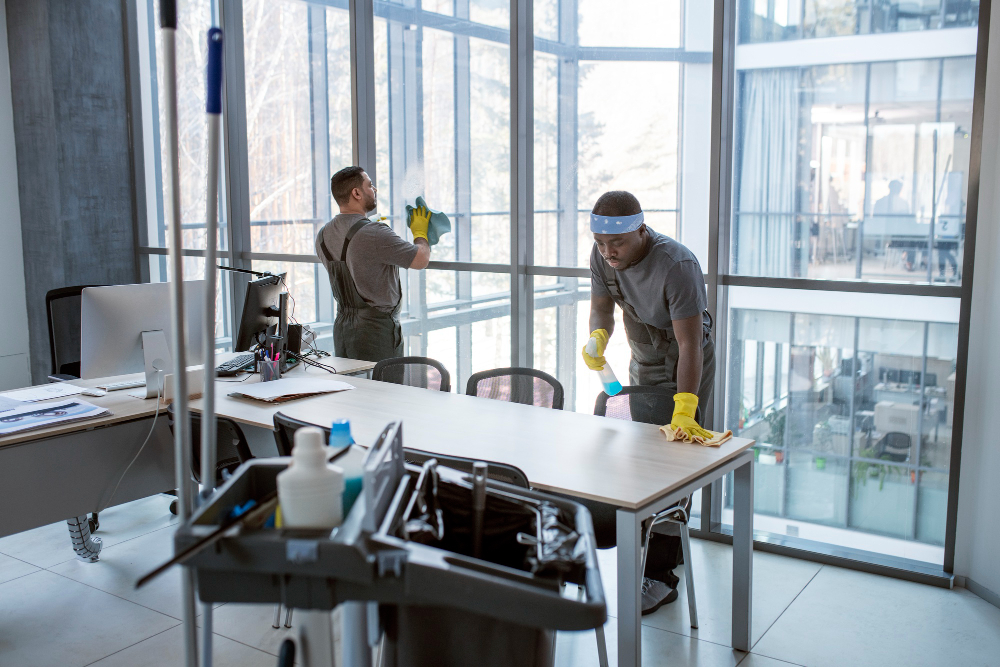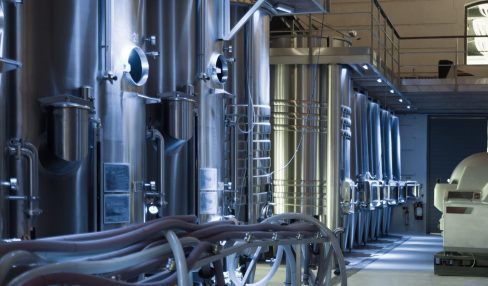Achieving Stellar Workplace Hygiene: Tips for Safe and Clean Office Spaces
30 December 2024
5 Mins Read

toc impalement
Key Takeaways
- High workplace hygiene can boost employee productivity and morale.
- Consistent cleaning practices can prevent the spread of illnesses.
- Simple workplace changes can lead to significant health and safety improvements.
Workplace hygiene is a practice rather than an achievement. At home, it’s part of the way of our lives, and at the workplace, it’s also part of putting in the work.
Whether you are an employer or an office admin, you need to ensure that all the employees are adhering to workplace hygiene practices. It’s the only way to achieve the tag of a ‘perfectly clean office.’
It’s surely not easy. But, a business can achieve it with its employees adhering to healthy workplace practices to maintain hygiene.
Introduction to Workplace Hygiene
Keeping a clean workplace is about more than appearance; it’s about ensuring a healthy, safe environment for everyone who enters the doors. A company’s commitment to maintaining a clean workplace speaks volumes about its values and concern for its employee’s and client’s well-being.
Utilizing commercial cleaning services can help ensure that high standards of cleanliness and sanitation are consistently met. A sanitized work environment can reduce sick days, improving productivity and workplace efficiency. This strategy is particularly important as businesses aim to balance operational demands with employee health and safety assurance.
The Importance of a Clean Office Space
A well-maintained office creates an ambience that reflects positively on a company and significantly supports its employees’ well-being. A clean office fosters pride among employees and visitors alike, a sentiment that’s crucial for cultivating a motivated and engaged workforce. In fact, research indicates that even minor enhancements in office cleanliness can lead to notable improvements in productivity. This suggests a direct link between the workspace’s cleanliness and employees’ efficiency and output.
5 Essential Cleaning Practices for Maintaining Workplace Hygiene
Engaging in daily cleaning routines is essential to upholding cleanliness standards. This includes vacuuming, dusting, and disinfecting shared office equipment such as printers, keyboards, and telephones.
Consistent cleaning schedules are critical in ensuring these tasks are carried out regularly and effectively. This helps maintain a clean environment and demonstrates a company’s commitment to its employees’ health and safety.
Creating a pristine and organized setting isn’t just beneficial for health; it enhances the general impression of the workspace, inviting positivity and productivity. Here are some ways to include the practices of workplace hygiene –
1. Promoting Sanitization and Disinfection
Global health developments have underlined the importance of effective disinfection protocols, especially recently. Establishing these robust protocols is vital for preventing the spread of germs that may compromise the health of anyone in the office environment.
Focusing on the regular sanitization of high-touch surfaces, such as door handles, elevator buttons, and light switches, is a crucial step in minimizing the risk of contamination. By emphasizing disinfection, businesses demonstrate their commitment to maintaining the highest hygiene standards.
2. Encouraging Employee Participation
Encouraging employees to take part in maintaining office hygiene is an excellent way to cultivate a sense of community and responsibility. Initiatives such as rewarding clean workstations or promoting regular hand washing foster a cleanliness culture and boost morale.
Simple actions, like providing hand sanitisers at common points throughout the office and assigning cleaning tasks, build teamwork while promoting a healthier work environment. When employees actively maintain cleanliness, they feel valued and play a part in ensuring their colleagues’ well-being.
3. Implement a Workplace Hygiene Policy
Yes, it helps to be vocal about workplace hygiene and educate your employees on workplace-specific hygiene practices. However, it’s often not easy to achieve this at scale when working with a large workforce. That’s where a workplace hygiene policy comes in. Workplaces can bring in hygiene policies that safeguard the organization’s overall health.
The policy may include regular handwashing, proper ways of managing waste, readily available hand sanitisers, etc. Employees can also suggest employees to take sick leave if they catch any viral infection. In addition, the employer must have routine cleaning and maintenance processes to keep the workplace clean and safe.
4. Keep the Workplace Organized
Due to their constant use, high-traffic areas in the office, such as main aisles, reception areas, restrooms, and kitchens, require additional attention. Arranging these areas to promote health standards is paramount.
For example, repositioning seating arrangements to ensure social distancing can significantly limit potential pathogen spread. Additionally, increasing the frequency of cleaning in these areas helps keep germs at bay.
This proactive measure ensures that all employees and visitors feel safe and comfortable, enhancing the collective peace of mind and trust in the workplace environment.
5. Improve Waste Management
Having clear rules for frequent and regular waste management at work is important. If the workplace has a proper hygiene policy, it should have ways to manage waste inside and outside the cubicle. Make sure that there are specific waste bins for degradable and non-degradable waste.
It also helps to have clear channels of communication and instructions in the form of infographics, helping people take the right action. For example, you don’t want your employees to put plastic in the waste bin where they put their leftovers. Also, if the bin is filled, make sure that the person in charge cleans it up regularly.
Benefits of Professional Cleaning Services
Engaging professional cleaning services can elevate the cleanliness level of your office beyond what is possible with standard internal cleaning teams.
Professionals in this field are equipped with advanced tools, industry-standard cleaning solutions, and expertise in handling the specific needs of different office settings.
This results in a superior level of hygiene, creating a healthier workspace for all. Additionally, by outsourcing these tasks, businesses can better allocate internal resources and focus on their core competencies, maximizing efficiency and effectiveness in their operations.
This strategic move ensures well-maintained premises and supports broader organizational growth and success.
Conclusion
A commitment to rigorous workplace hygiene profoundly impacts employee satisfaction and public perception of a business. Companies reap the benefits of improved health, productivity, and overall workplace happiness by taking deliberate, proactive steps toward enhancing cleanliness.
This concerted effort demonstrates that investing in cleanliness transcends mere appearances, reflecting a deeper commitment to the health and efficacy of all who interact with the business.
Read More


















Comments Are Closed For This Article